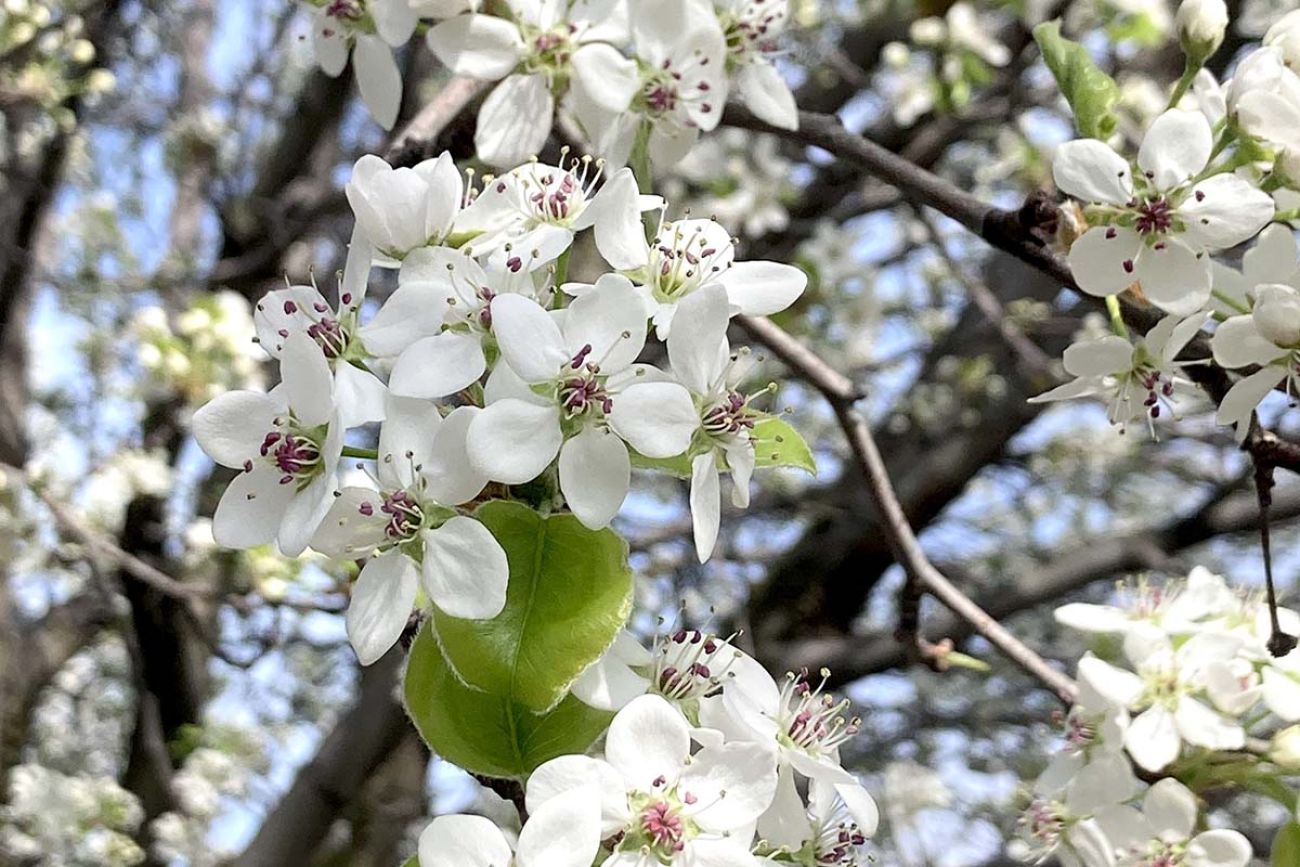Unseasonably warm weather in Michigan a challenge for fruit farmers

- Temperatures have hit in the high 40s and low 50s across most of Michigan this month
- The weather is aligned with the abnormally warm temperature this winter due to El Niño
- Fruit farmers who rely on cold weather for bountiful fruit crops remain cautious
Fruit farmers in Michigan aren’t panicking — yet — about unusually warm weather this year.
As winter events like the Tahquamenon Country Sled Dog Race and Black Lake sturgeon season are canceled, farmers are watching and waiting for colder temperatures to keep the trees chilled long enough for a fruitful season.
So far this month, temperatures across the state have hit the 40s and even 50s in some areas. Typically around this time of year, temperatures are near freezing. In Detroit, temperatures of 60 degrees are in the forecast for Friday, which would break the record high of 56 degrees, according to the National Weather Service.
The Upper Peninsula is also experiencing warmer temperatures. Last year the high for Feb. 9 was 37 degrees, and Friday’s forecast calls for 39 degrees — nearing the record there of 41 degrees.
Related:
- Michigan’s lost winter cancels sturgeon season, ski, dog sled races
- Upper Peninsula dog sled and ski races in peril from higher temps, no snow
Fluctuating temperatures can be particularly troubling for fruit farmers who rely on cold temperatures to help the trees “sleep” during the winter.
If temperatures are consistently too warm, crops can start to bud too early, putting the flower at risk of freezing and jeopardizing spring and summer fruit production when the temperatures drop again.
“For the average plant in Michigan, I would say they need 1,000 chilling hours before they wake up … typically between the temperatures of 35 Fahrenheit and 45,” said Brent Crain, consumer horticulture educator at Michigan State University.
If the trees are behind on chilling hours, they usually catch up in January and February because they are typically colder months, Crain said.
Mike Beck, President of Uncle John’s Cider Mill in St. Johns, said the warm weather this week is not ideal but he remains hopeful that fruit trees won’t be damaged, as long as temperatures stay cold for the remainder of the winter.
Jack King, vice president of crop protection at King Orchards Farms in Central Lake, isn’t necessarily worried about the warm weather but hopes to have colder weather that holds out until spring.
“I'm not in crisis mode and I'm not disappointed or anything like that, but I am a little anxious that it's going to be a warmer end of the winter than I would really like,” said King.
King grows apples, cherries, apricots and peaches.
“Every hour you get above 50 degrees is another notch towards bloom and coming out of hibernation,” he said.
A damaged crop not only impacts the farmers who have to keep up with operational costs but other businesses that rely on the crops.
“We're trying to get into having [cherries] put into granola bars and cereals and all kinds of delicious things,” King said. “When you have a year that there aren't any, it really hurts the consistency of being able to make those sales.”
There are tools farmers can use to help prevent early defrosting.
You could use frost fans, windmills or start a brush fire, which creates a little bit of an insulated blanket, said Greg Shooks, owner of Shooks Farm in Central Lake.
Shooks' concern is that the trees and vines didn't get an opportunity to “harden off” and store the moisture from their limbs in their rooting system for winter. That can create problems down the road for fruit development.
“If the tree didn't harden off, and we get the mid-60s touching 70 in March, April, that could wake the tree up and then give it more moisture inside those parts where the cherry is going to develop. Then, possibly in early May or so we could get a frost, and freeze out that bud,” Shooks said.
Typically, stone fruits — those with pits — like the cherries Shooks grows can be more sensitive to cold weather. But Shooks said it’s a little early to worry.
“It takes a lot to wake the trees up and wake the vines up,” Shooks said. “I know, they're calling for close to 50 up in our area here and towards the end of the week. That's not going to do much because the nights are still pretty cold.”
Michigan Environment Watch
Michigan Environment Watch examines how public policy, industry, and other factors interact with the state’s trove of natural resources.
- See full coverage
- Subscribe
- Share tips and questions with Bridge environment reporter Kelly House
Michigan Environment Watch is made possible by generous financial support from:
Our generous Environment Watch underwriters encourage Bridge Michigan readers to also support civic journalism by becoming Bridge members. Please consider joining today.
See what new members are saying about why they donated to Bridge Michigan:
- “In order for this information to be accurate and unbiased it must be underwritten by its readers, not by special interests.” - Larry S.
- “Not many other media sources report on the topics Bridge does.” - Susan B.
- “Your journalism is outstanding and rare these days.” - Mark S.
If you want to ensure the future of nonpartisan, nonprofit Michigan journalism, please become a member today. You, too, will be asked why you donated and maybe we'll feature your quote next time!






